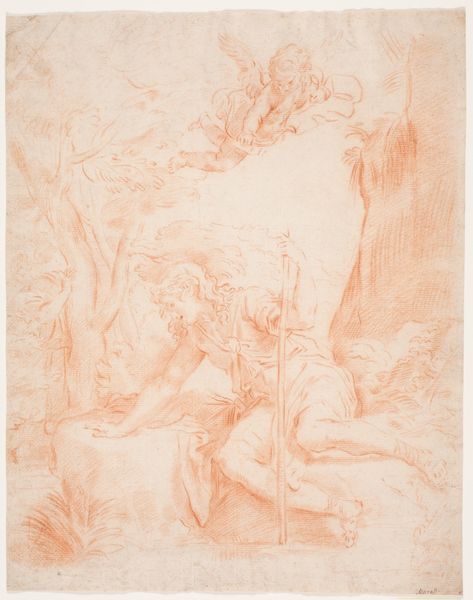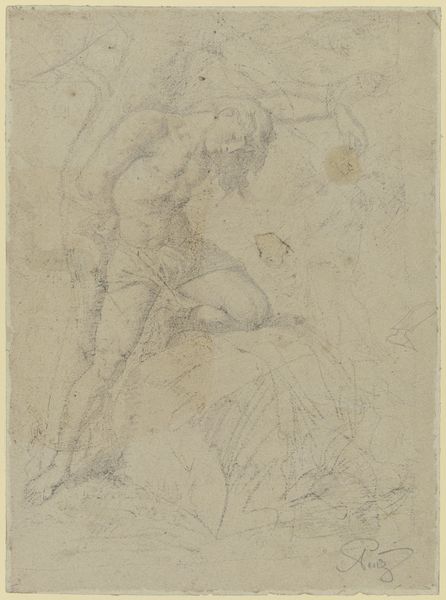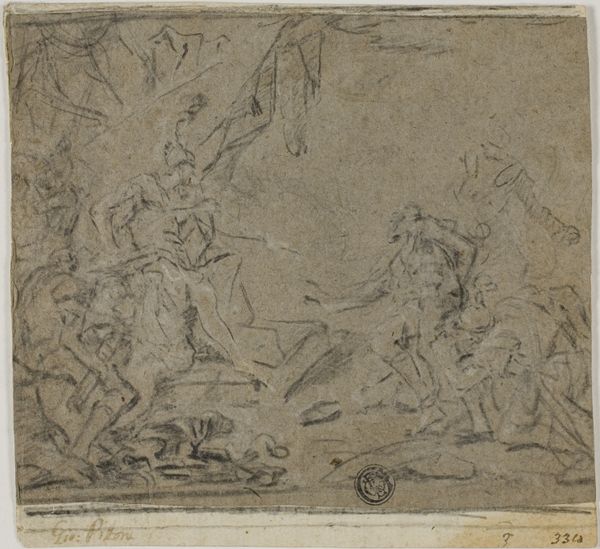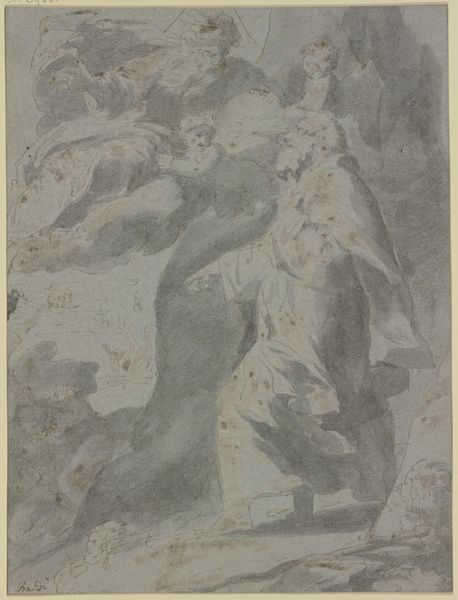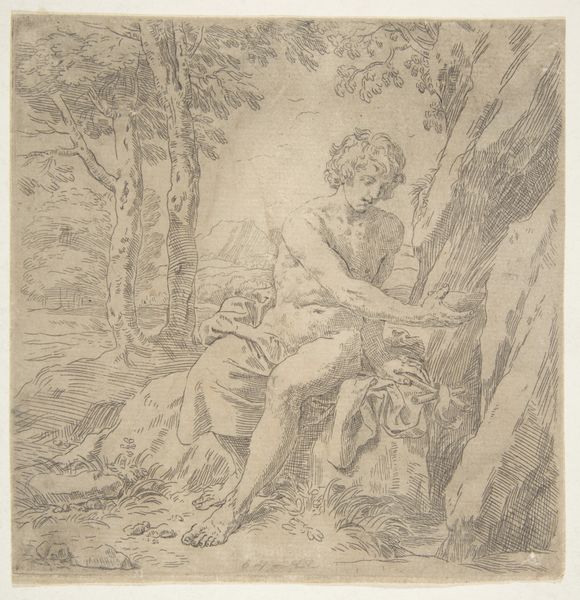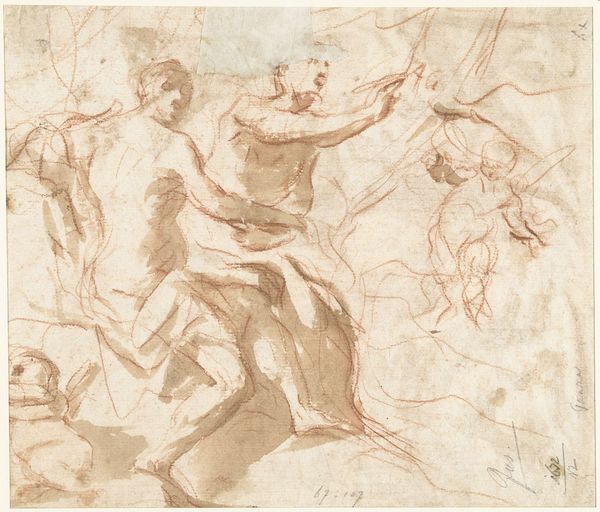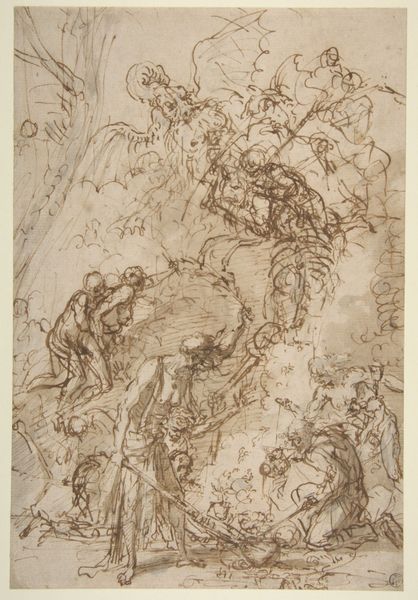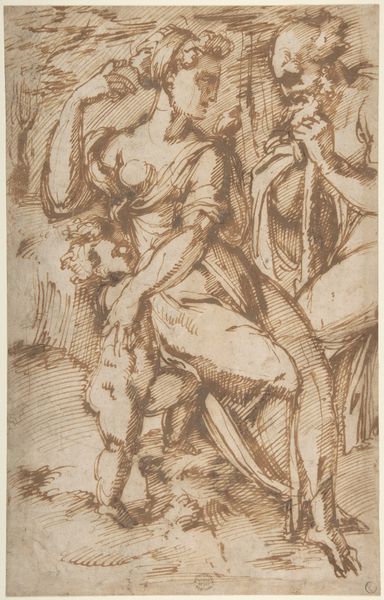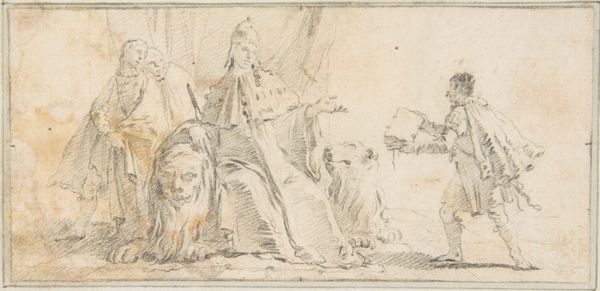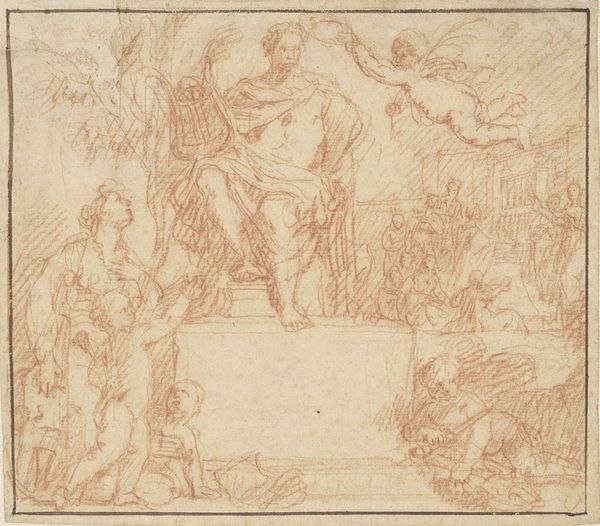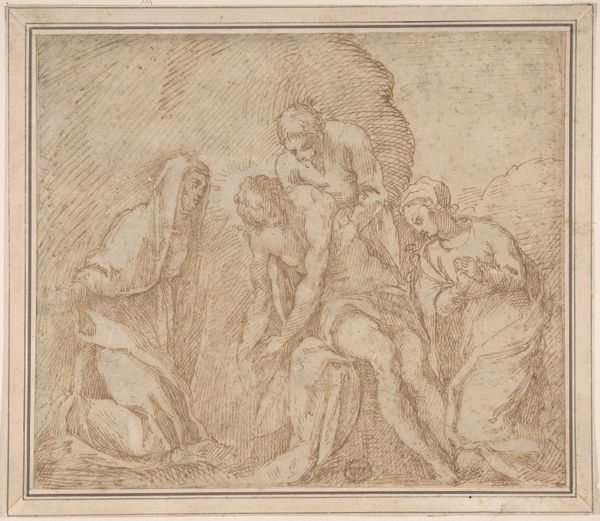
drawing, paper, ink
#
portrait
#
drawing
#
high-renaissance
#
narrative-art
#
charcoal drawing
#
figuration
#
paper
#
charcoal art
#
ink
#
13_16th-century
#
watercolor
Copyright: Public Domain
Parmigianino made this drawing of Saint John the Baptist and Saint Jerome with pen and brown ink in Italy during the 16th century. These holy figures reflect the period's deep religious faith, but also the emerging humanist interest in the individual. The image conveys meaning through recognizable visual codes. Saint John the Baptist is holding a bowl of water and Saint Jerome is depicted as a scholarly figure engrossed in reading and translating the Bible. During the Renaissance, religious institutions wielded immense cultural and political power. Artists often found patronage from the church, which shaped the themes and styles they explored. This drawing might have been a preliminary sketch for a larger religious painting, a common practice during the time. To understand more about this work, we can look at how religious art functioned in the Renaissance, and how artists negotiated institutional demands with their own creative visions. By researching the history of patronage, religious beliefs, and artistic practices, we gain deeper insight into the role of art within its specific social and institutional context.
Comments
No comments
Be the first to comment and join the conversation on the ultimate creative platform.

